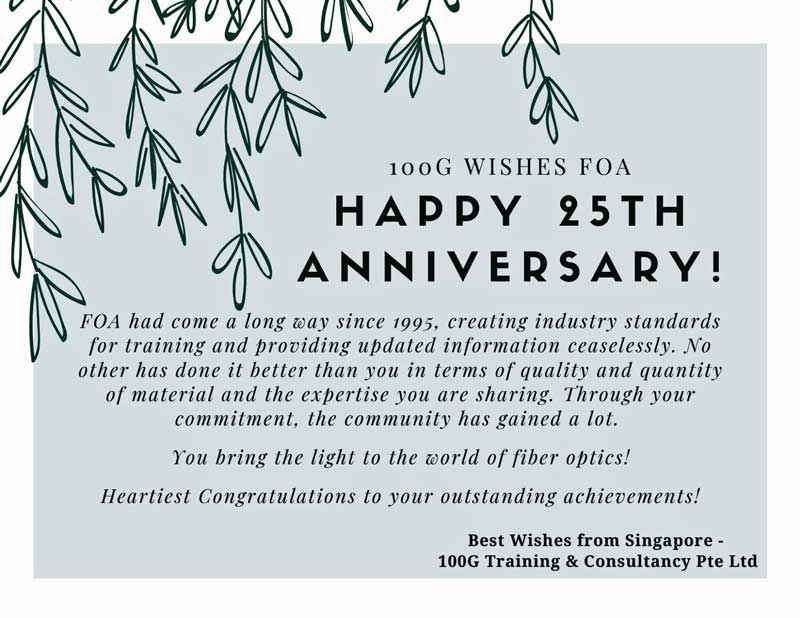|

-

- FOA
certifications to date:
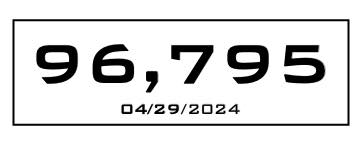
-
- If you are looking for:
-
- An installer or
contractor, send an email regarding your needs to the
FOA and we'll post it on our newsletters and social
media.
-
- A Fiber Optic Training
Class:
- FOA
Approved Training Schools
Fiber Optic News:
- FOA
Online Newsletter
-
- Technical Information:
FOA
Online Reference Guide
- Introduction
To Fiber Optics
-
- Show Your FOA
Affiliation:
- FOA
Logo Merchandise
- FOA
logos for certificant use
-
- Learn More About The
FOA:
- About
the FOA
- FOA
Certification Programs
- FOA
CFOT Renewal Form (pdf)
-
- For FOA Schools and
Instructors:
- Just
For Instructors
- Instructor
Development and Certification
-
-
-
FOA
is a member of:




|
Introduction
The Fiber
Optic
Association Inc. (FOA) is an international
non-profit
educational association chartered to promote
professionalism
in fiber optics through education, certification and
standards. FOA's main purpose is to develop a
competent workforce for the fiber optic industry and be a certifying
body for fiber optic workers, offering
certifications for fiber optics. FOA was founded in
1995 by
more than a dozen prominent fiber optics trainers
and
leaders from industry, education
and government as
a professional organization for fiber optics and a source of
independent certification, the FOA has grown to now being
involved in numerous activities to educate the world about
fiber optics and certify the workers who design, build and
operate the world's fiber optic networks.
Founded soon
after the initial commercialization of the Internet, the FOA
became a "virtual organization," perhaps one of the first
organizations so created. There is no FOA headquarters
building or any "brick and mortar" presence - appropriate to
its technology, FOA exists on the Internet and in the work
of its people. Those who run the organization live and work
all over the world, using modern communications to
communicate and collaborate. The network of experts working
to create the FOA knowledge base and programs include our
technical advisors who average more than 20 years experience
in fiber optics. Their experience ensures FOA curriculum and
certifications are the most comprehensive and up to date
available.
The
Beginning
The Fiber Optic Association Inc. was created by the
instructors and participants of the 1995 Fiber U training
conference held in Boston. Fiber U was a week-long fiber
optic training event with mornings devoted to classroom
courses and afternoons to hands-on training by numerous
vendors of fiber optic equipment.
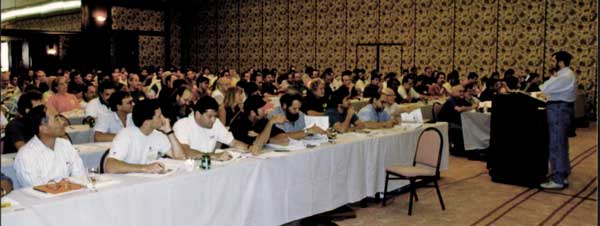 Eric Pearson teaches a class at Fiber U 1994 in Long
Beach, CA
Eric Pearson teaches a class at Fiber U 1994 in Long
Beach, CA
Fiber U was the creation of a company called FOTEC
Inc. of Boston, MA. FOTEC was started by Jim Hayes (founder
and current FOA President) in 1980 and began manufacturing
test equipment for fiber optics in 1981. By 1982, FOTEC
began to start training courses for its customers who were
all new to fiber optics. Throughout the 1980s, FOTEC ran
short courses in fiber optics around the US and eventually
in many other parts of the world. FOTEC was only in the test
equipment business, so it invited other manufacturers in
areas like fiber optic cables, connectors, splicing
equipment, etc. to participate in these courses.
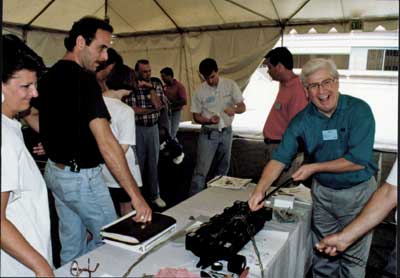 Dan Silver (R) at Fiber U 1994 in Long Beach (more
Fiber U photos)
Dan Silver (R) at Fiber U 1994 in Long Beach (more
Fiber U photos)
In 1992, Dan Silver, the fiber optic trainer for 3M Corp.
who was a regular participant in these courses, suggested
that FOTEC expand the program to become a full week
conference. That seemed like a good idea, so the first Fiber
U was held in Nashville, TN in 1993. It was a good idea -
over 200 students came from the US, Canada, Mexico and
several other countries and 40 vendors joined to offer
training. Fiber U became an annual event with international
participation.
During a meeting of instructors at Fiber U 1995, the
discussion focused on the need for a vendor-independent
certification for fiber optic technicians. Manufacturers had
contractor/installer certifications, but they were primarily
aimed at marketing the vendors products. Over lunch, the
decision was made to start a professional society for fiber
optic personnel and offer an independent certification for
techs. All the Fiber U instructors volunteered their
services to build the organization.
The instructors decided the industry was mature enough to
support a professional society and needed to create
industry-wide certifications. The founders included
experienced instructors from industry (3M, Siecor,
Panduit, FOTEC), government (US Navy and Air Force),
education (Lincoln Trail College and Wentworth Institute)
and private trainers (Pearson Technologies, Conquest
Communications) who were teaching fiber optics and who
provided the expertise in management, technology and
education needed to create a new professional society.
In July of 1995, The Fiber Optic Association was
incorporated in Massachusetts and was recognized as an
educational non-profit corporation, 501(C)(6), by the IRS.
The FOA charter was (as it still is now) to promote
professionalism in fiber optics through education,
certification and standards.
The FOA decided to use the new communications medium, the
Internet, to create an international professional society
that would utilize the expertise of the Fiber U participants
without the financial overhead of a traditional
organization. The FOA website, created at the beginning, was
one of the earliest websites for an organization.
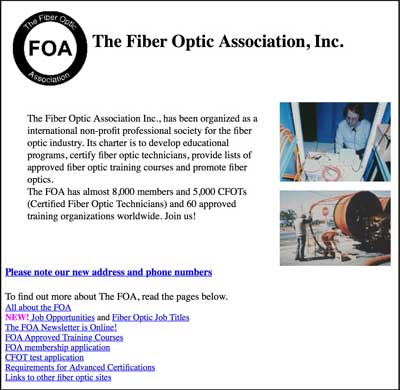 FOA website ca. 2000 (view
here on the WayBack Machine Internet Archive)
FOA website ca. 2000 (view
here on the WayBack Machine Internet Archive)
Who Were The FOA Founders?
Those
listed below in
BOLD are
still active teaching and working with FOA. See Profiles
below.
Jim Hayes, President of FOTEC Inc. Pioneering fiber
optic entrepreneur in test equipment and trainer who was
trained in physics/astronomy. Author of many EIA/TIA
standards and the instigator of the NBS/NIST fiber optic
calibration program. Creator of the Fiber U training
conferences. Author of ten textbooks, hundreds of
technical articles. Current FOA President.
See Profiles
below.
Eric Pearson, Pearson Technologies. Trained by
Corning in the 1970s, considered an industry expert on
termination and splicing, training since the early 1980s.
Respected expert witness in legal cases. Active FOA
Instructor. See
Profiles below.
Dominick Tambone, Engineer, Automatic Tool and Connector,
fiber optic termination and installation, training since
the early 1980s. Contractor and Active
FOA Instructor.
Bill Graham, Mississauga Training
Associates, Toronto, ON, CN. Background in utilities,
military, metropolitan fiber optics, training since the
early 1990s. Current FOA Director. See
Profiles below.
Prof. Elias Awad, Wentworth Institute, Boston, MA. Started
one of the first fiber optic academic programs in the
engineering department in late 1980s. Creator of NSF
program “Fiber Optics For Engineering Technology”
(NSF#9353997).
Prof. John Highhouse, Lincoln Trail College, Robinson, IL.
Head of telecom training program, started teaching fiber
optic outside plant construction in late 1980s. Masters in
Education, specialty testing. See
Profiles below.
Paul
Rosenberg, writer and technical trainer
Dan Silver, Product Specialist, 3M Fiber Optics, trainer
and applications. The man with the idea to create the
Fiber U training conferences and active FOA member.
Eric Loytty, Field Engineering, Corning/Siecor,
applications and training.
Bob Mason, Product Manager, Network Systems, Panduit,
applications and training.
Doug Elliott, IBEW Instructor, Toronto, ON, CN. One of
first IBEW apprenticeship instructors to teach fiber
optics.
Tom Collins, Northern Kentucky Technical College,
Professor. Techtricians, Owner/instructor. Current FOA
Director. See
Profiles below.
Dan Lyall, Project Engineer, Lockheed Martin, applications
and training.
Jim Davis, Program Director, U. S. Navy Navsea 56ZC, Navy
fiber optic standards.
Dave Chaney, Disney, Network Manager
Tony Beam, Tyco/AMP, Product Manager
Richard J. Smith, FOTechnologies, Technican/Instructor
Profiles
Of FOA Founders Still Active
Jim
Hayes, FOA #1, Founder and President, and Karen Hayes, VP
Administration
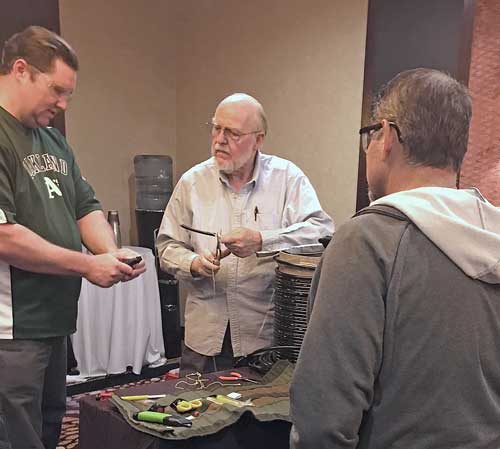 Jim
Hayes working with IMSA Instructors on lab techniques
Jim
Hayes working with IMSA Instructors on lab techniques
Jim Hayes was recruited into the fiber optic business by
the scientists at Bell Labs who were developing the
technologies in the late 1980s. They wanted the company
he worked for to build test equipment for AT&T. When
his company declined the opportunity, Jim and his wife
Karen, now FOA VP Administration, started one of the
world's first fiber optic test equipment companies in
1980, called FOTEC for, simply enough the Fiber Optic
Test Equipment Company. FOTEC quickly became involved in
training people in this new technology, inviting other
manufacturers to participate, leading
to the Fiber U training conferences. FOA evolved from
Fiber U as a certification body for the fiber optic
industry. Jim has remains active in FOA, serving as
President, writing and editing the FOA textbooks,
newsletters and online Guide, while Karen manages daily
operations as she has done since the beginning and
generally avoids the limelight.
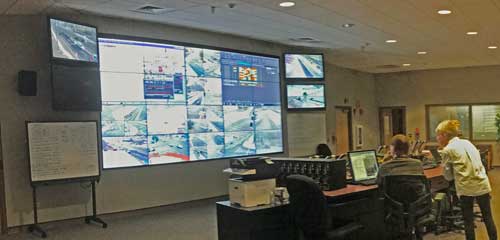
Karen (R) inspects a traffic management system during a
training program in Mesa, AZ.
Eric
Pearson, FOA #5, Pearson Technologies
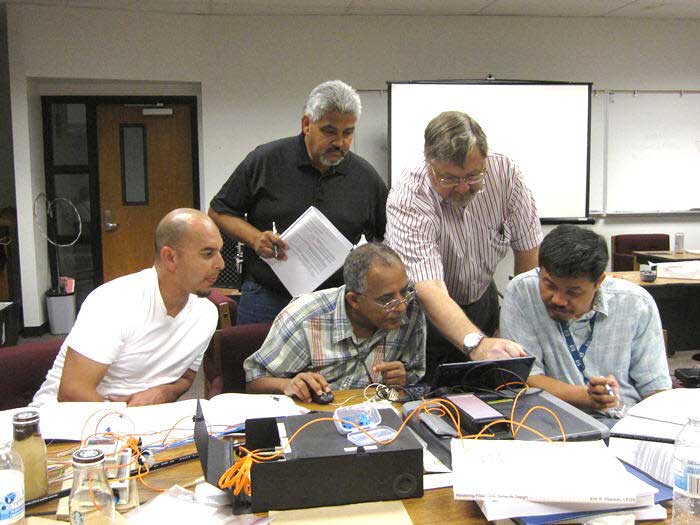
Eric (back row, right) shows students how to
interpret their work.
Eric Pearson and Jim Hayes are probably the two FOA
Founders with the most years in fiber optics, both started
in the late 1970s and are still active today. Eric began in
the fiber optic cable business, then transmission systems
and designed field installation equipment. He began training
more than 30 years ago and has published his workbooks and
manuals as what we like to call the "cookbooks" of fiber
optics. Eric may be the world's top expert in the process of
fiber optic termination and his books certainly are the best
manuals for termination. Eric still travels the world
doing training courses, finds time to continue writing and
updating his books (See
note below
on the new Kindle version of his installation
handbook) and consulting as an expert
witness in legal cases.
Eric
Pearson, Pearson Technologies
Bill
Graham, FOA #168, Representing FOA In "The Frozen North"
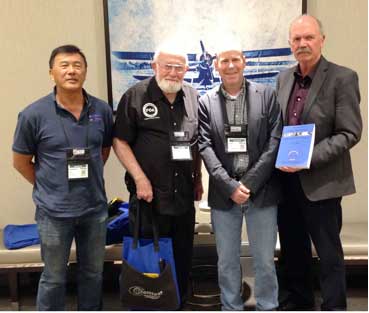
Bill
Graham (second from left above with the white beard) lives
near Toronto and has probably trained half of Canada in
fiber optics. Bill sold his company, Missisauga Training,
several years ago to another active Canadian who
took over the training but Bill is still active as a FOA
Director and promoter in Canada. Bill is famous for training
in the Frozen North, still in competition with Ian Gordon
Fudge of Fiber DK in Denmark to see who has trained closer
to the North Pole. Bill always sent us photos from his
trips, like these:
Tom
Collins, Director, FOA's IBEW and IMSA Liaison
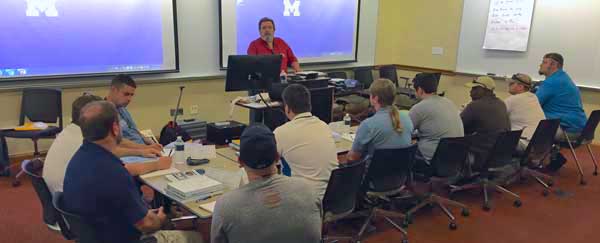
Tom Collins joined the FOA while a teacher at Gateway
Community and Technical College near Cincinnati, OH. Tom has
about 40 years of experience in the electrical and voice and
data fields. He is a master electrician, voice and
data technician, fiber optic technician, contractor, and a
technical instructor. His experience as an electrician and
apprenticeships has proven invaluable for FOA as Tom has
become FOA's liaison to the IBEW apprenticeship program and
has trained numerous IBEW apprenticeship instructors
at their National Training Institute (Tom's at NTI 2016
above).
Tom became a FOA Director almost 20 years ago and we've
benefited greatly from his experience. He and John Highhouse
created the FOA Train-The-Trainer program and FOA's unique
in the industry instructor certification program. Tom has
helped us understand technical training issues, online
training and testing and a lot of other educational topics.
Tom has a training partner too, his wife Donna, a FOA CFOS/I
instructor herself. Together they have been instrumental in
helping the FOA develop and manage its certification
programs.
John
Highhouse, FOA #2, Retired, Still Influences FOA
Activities
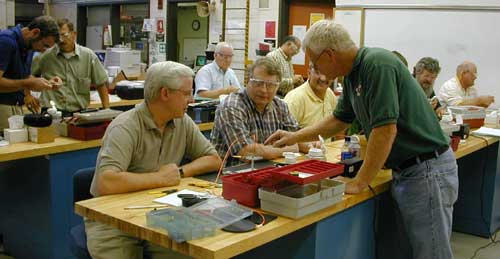 John Highhouse teaching a FOA Train-the-Trainer
Course
John Highhouse teaching a FOA Train-the-Trainer
Course
John
Highhouse started the first OSP/telecom college program
for fiber optics at Lincoln Trail College in Southern
Illinois. John was a Fiber U instructor and FOA
founder. He participated in the development of FOA
technical materials like our original textbook and the
CFOT certification. One thing John brought to the group
was his background in education with a specialty in
testing. He taught us how to test properly and fairly:
have definitive reference materials for the test that can
be also used for developing curriculum and develop test
questions that determine if the applicant's knowledge is
adequate. FOA still uses the test methodology that John
taught us before he retired.
Certification
Program Development
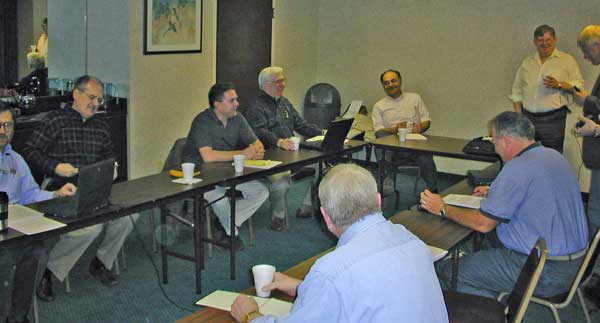 FOA
Advisors Meeting in 1997. FOA
Advisors Meeting in 1997.
From left around the table: Eric Pearson (Pearson Tech), Bob
Mason (Panduit), Dominick Tambone (Automatic Tool &
Connector), Dan Silver (3M Fiber Optics), Elias Awad
(Wentworth Institute of Technology), Doug Elliott (IBEW
Toronto), John Highhouse (Lincoln Trail College), Dan Lyall
(Martin Marrietta) and Eric Loytty (Siecor), photo by Jim
Hayes
This group of FOA founders began meeting quarterly and
collaborating via email while working to analyze the job
tasks of the fiber optic technician and creating a list of
knowledge, skills and abilities(KSAs) that such a technician
should have. It was an excellent group for this task as they
represented many aspects of the fiber optic field and all
had many years of experience. New recruits joined also. Tony
Bean, an applications engineering manager at AMP who had
previously worked at Siecor, Paul Rosenberg, a trainer for
electrical trades and author who with Hayes had written the
Data Voice and Video Cabling textbook and Dave Chaney, a
contractor who became network manager for Disney Corp. also
joined FOA to assist in the development of FOA programs.
The FOA
Board of Advisors 20 years ago, meeting to work on FOA
certifications.
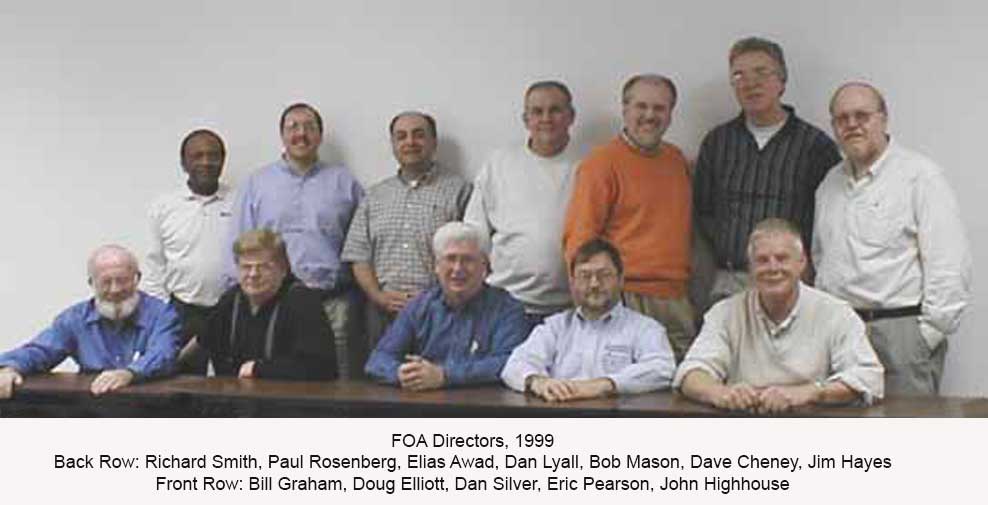
One aspect of the creation of a general fiber optic
certification was the different types of applications that
fiber optic technicians were involved in. Technicians
working for phone companies building long distance or
metropolitan networks (OSP or outside plant networks) had
different job tasks that those working on premises cabling
for LANs (local area networks), or those in the military
building tactical systems or cabling on platforms like
ships, helicopters or airplanes.
The group was able to define the basic knowledge, skills and
abilities (KSAs) expected of all fiber optic technicians, no
matter their specific applications or jobs. In addition, the
group identified three areas of skills that were often jobs
done by fiber optic specialists: splicing, termination and
testing. These were also identified as subjects for
specialist training and should be considered for specialist
certifications.
It became obvious that FOA was not going to be a training
organization; that would be impossible in light of the
international scope of the organization. Training would be
the duty of the schools, manufacturers and independent
trainers who had been training fiber optic technicians for
over a decade. The FOA would set the standards for
certifications and manage the certification programs and
leave the training to others.
Then the task of creating a certification program began in
earnest. At this stage, the academics became the group
leaders, offering their expertise in development of
educational programs. Professor Highhouse became the project
leader. He created the checklist of requirements for a
certification: KSAs from job task analyses, reference
materials for trainers to use to develop curriculum and for
students to study, criteria and procedures for certification
examination and the examinations themselves.
Developing Reference Materials
The first task for the advisors was to identify reference
materials. A problem was immediately identified. Textbooks
on fiber optics were too theoretical and none dealt with the
installation processes. Materials on installation were
available from manufacturers but were all specific to their
products. There were no reference materials deemed
acceptable, so the decision was made to create a proper
textbook for fiber optic technicians.
The task of editing the book was accepted by Jim Hayes who
had already created a self-published a book on fiber optic
testing for his company FOTEC. The material in that book
became the chapter on fiber optic testing for the new
technician book. Others contributed their expertise.
Everyone contributed to the chapter on applications. Prof.
Awad had created a curriculum on basic fiber optics under an
NSF grant and it was adapted to become the chapter on the
basics of fiber optics. Eric Pearson and Dominic Tambone
created on the chapter on termination and splicing.
Professor Highhouse, Dan Silver and Eric Lloytty wrote
sections on installation.
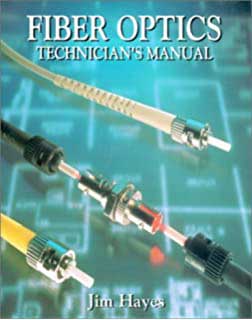
The material for the textbook was produced quickly as the
authors were all experts in their field and created chapters
on their expertise. Delmar, the publisher of technical
books, became the publisher and the first edition of The
Fiber Optic Technicians Manual (ISBN 10: 0827374267)
was released in 1996. The book was described by Delmar
thusly: “This book is intended for training installers of
fiber optic networks. Technicians and electricians eager to
learn more about fiber optic design, installation, and
troubleshooting will find this book a practical and
comprehensive source, useful in both training and self-study
situations.”
At the same time, FOA began creating a website with the
basic fiber optic information contributed by the advisors
made available to everyone online. That website, the FOA
Online Guide, has been expanded and updated continually
until today.
Creating A Certification Exam
With the job analysis and KSAs as a reference guide,
Professors Highhouse and Awad and their collaborators began
creating criteria for classroom and laboratory training and
an exam of the knowledge of certification candidates. The
training aspects were covered in an Instructor’s Manual
created by the FOA that described the classroom and hands-on
labs expected for certification. In the process of creating
an exam covering the knowledge part of the exam, Professor
Highhouse created guidelines for creating tests and test
questions still in use by the FOA today.
The first FOA exam for certification was made released by
the Board in 1997. The certification by that time had a
formal name, Certified Fiber Optic Technician, CFOT. The
certification was first offered by the founders of the FOA
to their own students to verify the program before expanding
to other training venues. The examination process involved
the instructors who were tasked to verify that students
showed appropriate skills and abilities during hands-on
activities before taking the examination given at the end of
the course.
Expanding The Scope Of The FOA
During this development process, the FOA had been introduced
to the world as the international professional society of
fiber optics. Interest in the FOA certification program was
high and trainers around the world began asking to become
part of the program. When the FOA advisors agreed that the
CFOT was ready to be offered by more trainers, applications
were accepted from trainers and training organizations.
Criteria for potential trainers were established by the
advisors that included requirements for curriculum in the
classroom and hands-on labs, including required training
equipment. Educational institutions, commercial trainers and
fiber optic manufacturers or vendors made applications. The
advisors realized that to maintain the integrity of the
certification, it was necessary to create an agreement with
the schools or trainers that covered all aspects of the
certification process and included regular reviews of their
performance.
Some applicants, especially in the academic world, had
little or no practical knowledge in fiber optics, so it was
necessary to help them learn the knowledge and recommend to
them venues to acquire the hands-on skills necessary. Many
used the Fiber U conferences which had partnered with other
organizations like the National Electrical Contractors
Association, the COMNET conference, etc. to offer training
at many conferences and meetings. Others used other
FOA-approved trainers or vendors for training. To provide a
guide to skills training, FOA personnel led by Pearson,
Tambone and Hayes developed a Fiber Optic Lab Manual that
described in detail the processes used in fiber optic
installation and how they should be taught in labs.
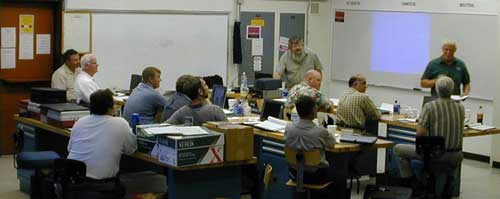 John Highhouse
conducts class at FOA TTT 2002 John Highhouse
conducts class at FOA TTT 2002
FOA began planning its own Train-The-Trainer program to be
held at Gateway Community College where Professor Tom
Collins taught. Prof. Collins had joined the FOA advisors
after attending Fiber U and creating his own program at
Gateway and the IBEW apprenticeship program in Cincinnati.
The first FOA T-T-T was held in 2002 at Gateway, run by
Professors Collins and Highhouse and introduced the FOA
certification for instructors, CFOS/I, Certified Fiber Optic
Specialist in Instruction. After several years of T-T-T
classes, the instructor training was primarily moved online.
Meanwhile, advisors Pearson, Tambone and Hayes were heading
a group working on skills specialist certifications in
splicing, termination and testing. Job analyses were done
and KSAs created for CFOS/S, Certified Fiber Optic
Specialist, Splicing, CFOS/C, termination with connectors
and CFOS/T for testing. These skills-based certifications
had greater requirements for hands-on labs, with more
equipment and time for hands-on activities required. Exams
were developed with Professors Highhouse and Awad using the
criteria they had created. Instructor manuals were developed
to assist instructors in setting up appropriate training.
FOA schools were then authorized to offer these specialist
certifications.
A Virtual Organization
As mentioned earlier, the FOA was a professional society of
the Internet age. There was no physical presence, per se,
and no employees, just a few contractors and many
volunteers. Income from certifications, initial and renewal,
and book royalties was sufficient to pay outside services
like administration and accounting. By 2002, the daily
operations required more time and attention, so Jim Hayes
and Karen Hayes, having sold their company FOTEC, were
contracted to manage the organization and provide technical
leadership, a role they still fulfill today. FOA also has
contracted administrative, bookkeeping/financial, software,
media and legal services as needed. In 2003, the FOA was
legally moved to California when the Hayes’s moved to
Southern California.
Growing Into The 21st Century
The early 2000s were a development time for the FOA and its
network of schools expanded worldwide. Although the fiber
optic industry in the US experienced a severe recession in
2001-2 as the large Internet growth of the late 1990s turned
out to be a bubble, the FOA continued to grow, particularly
overseas. Programs and operations were continually improved
and updated as technology and applications evolved.
With
the internationalization of the FOA, the advisors
expanded to include some very qualified people. Joe
Botha, owner of Triple Play Fiber Optics in Durban South
Africa was training fiber techs throughout sub-Saharan
Africa and working with governments and telecom
companies on manpower development. Ian Gordon Fudge of
Fiber DK in Copenhagen, Denmark was a consultant and
authorized trainer for many fiber optic and
communications companies working an area from the Arctic
to the Middle East. Bee Suat Lim of 100G Training and
Consultancy in Singapore was involved with projects in
Southeast Asia. These three have been major contributors
to the development of FOA technical resources and
certifications, as have many others involved in the FOA
organization.
Like all organizations, the FOA's development was dependent
on a group of highly competent, highly motivated individuals
devoted to educating the fiber optic community. Some of the
instructors and training organizations that were
instrumental in FOA's growth deserve special recognition.
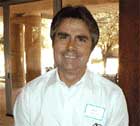
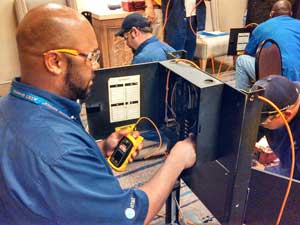 Bob Ballard
of BDI Datalynk and one of his classes Bob Ballard
of BDI Datalynk and one of his classes
Bob Ballard started BDI Datalynk, a training organization
with a unique approach: Make the classroom look like the
real world then pack it into the back of a van. Carry it
around the country and partner with the continuing education
departments of colleges to offer FOA certification classes.
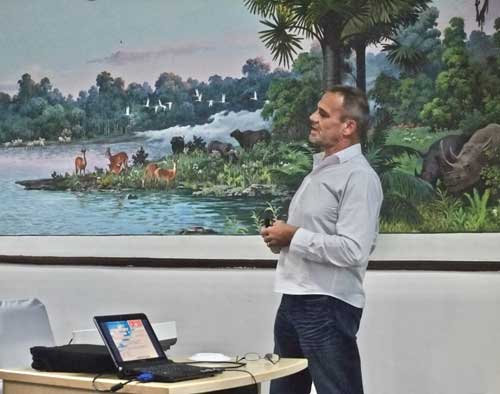 Joe
Botha of Triple Play in his element, teaching in Zambia Joe
Botha of Triple Play in his element, teaching in Zambia
Joe has been instrumental in training techs throughout
Sub-Saharan Africa. Joe is also creator of the FOA OSP
Construction textbook.
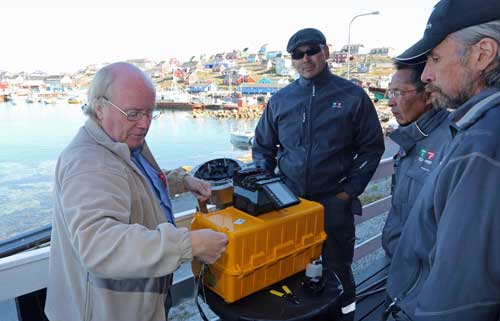 Ian Gordon Fudge of Fiber DK teaching students how to splice
OPGW in Greenland. Ian and FOA Director and Canadian Bill
Graham have trained everywhere in the far North.
Ian Gordon Fudge of Fiber DK teaching students how to splice
OPGW in Greenland. Ian and FOA Director and Canadian Bill
Graham have trained everywhere in the far North.
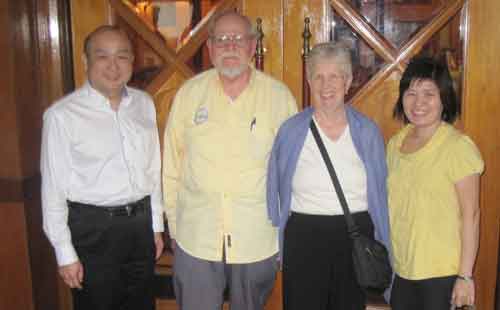 Bee
Suat Lim, Director (R) and Isaac Yeo Hock Lai (L) of 100G in
Singapore with Karen and Jim of the FOA during a visit to SE
Asia. Bee was instrumental in creating the FOA textbook on
Fiber Optic Network Design. Bee
Suat Lim, Director (R) and Isaac Yeo Hock Lai (L) of 100G in
Singapore with Karen and Jim of the FOA during a visit to SE
Asia. Bee was instrumental in creating the FOA textbook on
Fiber Optic Network Design.
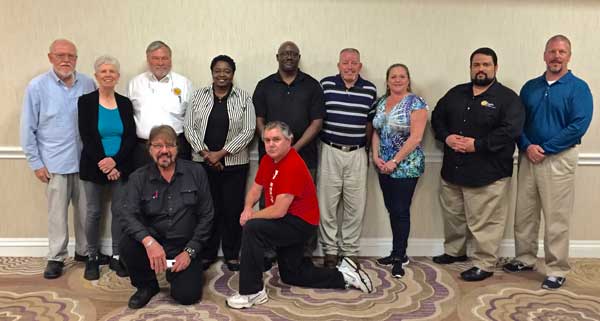 Jerry Morla, 2nd
from R, at a meeting of FOA instructors in Atlanta, is the
latest FOA Director to join us. Jerry, who came on board
in 2008, is FOA's ed-tech person, looking at new methods
using technology to make learning better and more
efficient, a valuable asset in these times of social
distancing and isolation. Jerry Morla, 2nd
from R, at a meeting of FOA instructors in Atlanta, is the
latest FOA Director to join us. Jerry, who came on board
in 2008, is FOA's ed-tech person, looking at new methods
using technology to make learning better and more
efficient, a valuable asset in these times of social
distancing and isolation.
Partnering
and Promoting FTTH Since 2006
In 2006 when FOA was approached by Verizon to assist them in
recruiting and training personnel for a new program of fiber
to the home expansion called FiOS. FOA advisors worked with
Verizon technical personnel to understand the new passive
optical network technology (PON) being used, the
installation practices they were developing and create
reference and educational materials to support training. In
addition, In 2007 FOA and Verizon did several seminars
together on both coasts to educate trainers and contractors
and help Verizon’s recruiting efforts. This work led to the
new FOA specialist certification in FTTx or Fiber to the
Home/Business/Curb, etc., FOA’s first application
certification. This certification was uniquely structured to
be appropriate for both technicians who would be installing
FTTx and managers who needed to be trained in the new
technology that their company was installing.
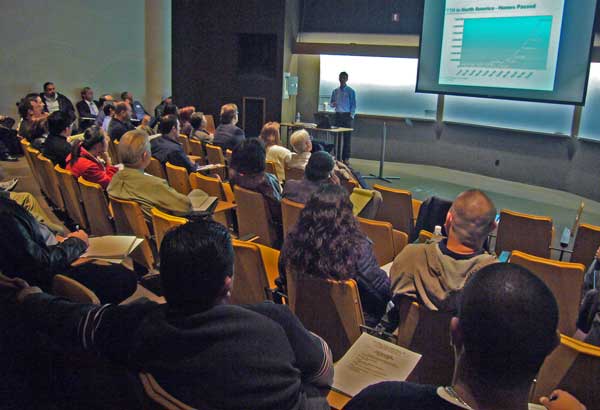 FOA and Verizon ran this FTTH Summit in LA in 2007
FOA and Verizon ran this FTTH Summit in LA in 2007
The success of the FTTx certification program encouraged the
FOA to create several new certifications. Professor Tom
Collins worked with FOA to develop a certification in
premises cabling based on standardized structured cabling
for LANs (local area networks for PCs), but expanded to
include copper and fiber cabling and the rapidly growing
WiFi wireless technology. Several schools wanted a
specialist skills certification for outside plant
technicians which was also developed, then later updated
with material from advisor Joe Botha’s construction course
to include aerial and underground construction. Other
certifications were created at the request of instructors,
schools and industry groups, including optical LANs and
fiber optics to support wireless networks.
FOA As A Publisher
As the FOA grew, the FOA Guide’s online technical material
became a trustworthy resource for people looking for answers
about fiber optic topics. But the FOA textbook was a
preferred resource for those who still liked their
information on paper.
While FOA was regularly updating its online technical
material and exams to keep up with technology, the textbook
publisher was much slower to update the textbook which
became a problem. In 2008 as the world entered another
recession, the publisher postponed an update and raised the
price of the book to a point the FOA schools objected. FOA
did a survey of publishing, decided that publish-on-demand
technology was a more acceptable alternative and began
creating its own textbook, The FOA Reference Guide To Fiber
Optics, based on the online technical materials on the FOA
website. The FOA Online Guide had grown to hundreds of pages
of technical materials and became the most popular reference
for fiber optics online, with over one-half million visitors
downloading about four million pages of the FOA Guide in
2018.

The new self-published FOA textbook was an immediate
success. It was more up to date, better organized for both
teaching and reference and, even at about one-fourth the
price of the previous book, contributed more royalty income
to the FOA. In addition, it could be updated anytime, so the
FOA has since combined the textbook review with the annual
review of the CFOT certification program, updating them in
concert.

The ease and success of self-publishing encouraged FOA to
expand its offering of books. The original book was
translated into Spanish and French for our schools who
taught in those languages. Additional books were introduced
to support FOA certification programs in fiber optic network
design, outside plant installation, premises cabling and
fiber optic testing. FOA also printed the textbook created
by one of our advisors, Joe Botha in South Africa, for
outside plant construction.
FOA Became A Resource For The Industry
FOA began an online newsletter in the early 2000s, covering
news of the industry, interesting applications, new
components and what became a favorite section, “Good
Question.” The FOA had been getting calls and emails from
people looking for advice which we were able to answer by
using the broad expertise of our advisors. This column in
the newsletter gave the FOA an indication of what people
wanted to know and insight into issues in the industry.
Those questions led to new pages in the FOA online Guide to
expand on the answers and have been archived on the FOA
website. Today the newsletter has about 20,000 readers per
month and the questions keep coming, several every day.

As the FOA Guide grew to nearly 1,000 pages of technical
information and was used more and more, it rose to the top
of web searches, increasing its audience even more. After
twenty years of growth, the FOA Guide has nearly a
half-million visitors each year downloading almost 4 million
pages of technical information.
As the Internet became capable of supporting video, FOA
offered tutorials online on many aspects of fiber optics.
With the advent of YouTube, FOA created a YouTube channel,
thefoainc, that hosts over 100 videos, including 50 lectures
and an equal number of hands-on tutorials. The FOA YouTube
channel has almost 20,000 subscribers and over 3 million
views.
Online Education For Free
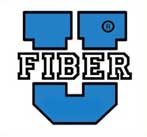
Along with the Fiber U technical material, the FOA obtained
the name “Fiber U”, and used it to create an online
self-study website, fiberu.org, inspired by the original
Fiber U online created in 1997. Fiber U was one of the first
online learning sites based on the work of a Boston school
teacher who had developed it for Boston teachers. While he
was a summer intern at FOTEC, he created Fiber U online
based on the FOTEC/Fiber U online technical website, and it
became an immediate success.
Since the FOA Online Guide was so extensive, FOA used Fiber
U as a way to assist anyone wanting to learn about fiber
optics and for experienced fiber techs to study before
challenging the FOA CFOT exam without taking a training
class. Several instructors, led by Professor Tom Collins,
used Fiber U as part of a blended learning program for their
college students, with online study replacing some classroom
lectures, allowing in person classes to be primarily devoted
to hands-on labs. While Fiber U has been a valuable way of
assisting people learning about fiber optics and preparing
for FOA certification, it is not used for direct
certification, only as a learning aid. Actual certification
requires training and/or taking an exam while proctored.
FOA Assistance With Fiber Optic Projects
Quite a few inquiries the FOA gets are about fiber optic
network projects. The projects vary from metro traffic and
surveillance networks, independent fiber to the home (FTTH),
industrial (oil and gas, chemical, automotive, etc.),
government/military and much more. FOA provides free advice
on a technical level and contacts needed for the projects.
FTTH has been a popular topic and FOA has assisted in
projects as diverse as Southern Fiberworx, a FTTH project
done entirely internally by a real estate developer and Anza
Electric Cooperative’s project in the CA mountains that
became known as “fiber to the ranch.” Other FTTH projects
have been in areas as diverse as Lebanon and South Africa.
FOA has also been involved in optical LANs based on FTTH
technology that has become very popular in the government,
medical and hospitality fields.
FOA provides this assistance at no cost, considering it part
of our original charter as a professional society. Of
course, all the projects require qualified technicians to
design, install and operate them, thus promoting the FOA and
its certifications, Many of the projects also require
training personnel which benefits the FOA network of
approved schools and its certification programs. And the FOA
network of advisors often take over to provide assistance to
the projects locally.
All of this work, the free technical reference materials and
online training, assistance in answering inquiries and
providing contacts has made FOA the center of fiber optic
activity and a trusted source of information.
Partnerships And Affiliates
FOA’s expertise in the fiber optic field has led to
partnerships with other organizations wanting to provide
their groups with that training. Several members of the FOA
founders and early advisors (Hayes, Elliott, Graham,
Collins) were involved with the IBEW/NECA NJATC telecom/low
voltage apprenticeship program, the largest technical
apprenticeship program in the US. FOA became a partner with
the NJATC to assist them in developing their program in
fiber optics, participating in their annual National
Training Institute for instructors, and has trained hundreds
of JATC instructors who teach for the FOA CFOT at over 30
local union apprenticeship training centers.
FOA works with IMSA, a century-old professional society for
traffic control engineers to provide CFOT certification. The
Communications Workers of American Alliance uses FOA
certifications to ensure competence for their workers. FOA
is now assisting IPC, a trade association for manufacturers
of hardware primarily for aerospace industry, create a fiber
optic certification program. FOA has worked with EPRI, the
Electric Power Research Institute, to create a Strategic
Guide To Fiber Optics for their member utility companies.
Fiber optic manufacturers like Corning and Clearfield,
telecommunications companies around the world like
Cincinnati Bell and Etisalat in UAE and many more use FOA
programs for training and certifying employees and
customers.
Hundreds of companies, agencies and organizations worldwide
use FOA certifications as a measure of competence for
employees and contractors. FOA-certified techs build telecom
landline and wireless networks, CATV systems, utility
networks, data centers, explore for oil and gas, operate
remote-operated vehicles for undersea exploration, build
military strategic and tactical networks and hundreds of
other applications, literally from pole to pole.
Standards And Technology
FOA has been involved with standards programs for many
years. FOA is a member of the TIA and ANSI and a participant
in the TIA TR-42 committee on fiber optics and cabling. Jim
Hayes is the usual FOA representative in the standards
committees as he has been involved with developing fiber
optic standards since 1983 at TIA, ANSI and several military
standards groups. While at FOTEC, the fiber optic test
equipment he founded in 1980, he convinced the US National
Bureau of Standards that a standard was necessary for fiber
optic measurements leading to the NBS/NIST program for
calibrating optical power. He is the original author of
EIA/TIA standards FOTP-95 and OFSTP-7/14 and a contributor
to numerous other standards dating back to the 1980s. Other
FOA members have been actively involved in standards,
including founding member Jim Davis who was the project
leader of the military standards group NAVSEA-56ZC until his
retirement.
FOA partnered with NECA (National Electrical Contractors
Association) in their NEIS (National Electrical Installation
Standards) program to create ANSI/NECA/FOA-301, a standard
for the installation of fiber optic cable plants. Today FOA
maintains an active role in the TIA and monitors other
standards groups for information important to the fiber
optic field. FOA helps explain their meaning and importance
to the readers of its technical materials. FOA is
considering becoming an active ANSI standards member and
creating standards for fiber optic network installation. FOA
has worked with organizations like the US Department of
Labor to create job descriptions for fiber optic techs and
assist in standards for workplace certifications.
FOA advisors had a long history participating in industry
standards and co-operative R&D projects. The
organization has taken on several technical projects itself
in topics of interest to the fiber optic industry, many in
the field of testing. Pearson and Hayes investigated the
correlation of optical loss test sets (OLTS) and optical
time domain reflectometers (OTDR) in multimode tests with
mode conditioners. Terry O’Malley, an FOA advisor who
created and gave training at AT&T on OTDRs has done
several projects to show how OTDR traces show events of
interest such as low reflection APC connectors and the
condition of the end of an optical fiber that is broken. Joe
Botha in South Africa did projects with his students on
splicing dissimilar singlemode fibers. Two FOA advisors,
Bill Graham and Ian Gordon Fudge, have a ongoing contest of
who can do training closest to the North Pole and they share
their experiences in cold-weather applications through the
FOA newsletter and website.
As a certifying body, FOA follows
the guidelines of ISO/IEC 17024, the international standard
for certifying bodies, to create a better
certification program.
Statistics

As of July 2020, our 25th Anniversary, FOA has certified
more than 81,000 technicians who have achieved over
110,000 certifications. FOA has approved schools
offering FOA certifications in more than 40 countries around
the world. Besides the US, FOA instructors teach in
locations as varied as First Nation villages in the Canadian
Arctic, villages in Greenland, the Middle East, most
countries in Africa, South America and Asia. FOA’s Advisory
Board has members in the US and Canada, Copenhagen, DK,
Durban, SA, Singapore, Nairobi, Cairo, and more, assuring
the FOA maintains an international perspective on the fiber
optic field.
|
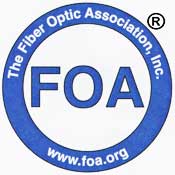 The Fiber Optic Association - History
The Fiber Optic Association - History The Fiber Optic Association - History
The Fiber Optic Association - History

 Eric Pearson teaches a class at Fiber U 1994 in Long
Beach, CA
Eric Pearson teaches a class at Fiber U 1994 in Long
Beach, CA Dan Silver (R) at Fiber U 1994 in Long Beach (more
Fiber U photos)
Dan Silver (R) at Fiber U 1994 in Long Beach (more
Fiber U photos) FOA website ca. 2000 (view
here on the WayBack Machine Internet Archive)
FOA website ca. 2000 (view
here on the WayBack Machine Internet Archive)